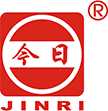How Thick Can a Ring Binder Hold Paper?
A Ring Binder is one of the most efficient ways to organize documents in offices, schools, and archives. Its capacity to hold paper depends primarily on the ring size, the number of rings, and the paper thickness. Understanding these aspects helps users select the right binder for different applications.
Understanding Binder Capacity
The thickness of paper that a ring binder can hold is determined by the internal diameter of its rings. The larger the rings, the greater the number of sheets the binder accommodates. A standard reference for binder capacity is the ring diameter, usually measured in inches or millimeters. Common sizes include 0.5-inch, 1-inch, 1.5-inch, 2-inch, 2.5-inch, and 3-inch binders. Each size correlates with an approximate number of sheets it can hold.
The following table provides an overview:
| Ring Diameter | Approx. Capacity | Paper Thickness Range |
|---|---|---|
| 0.5 inch | 75–100 sheets | 0.4–0.5 cm |
| 1 inch | 175–200 sheets | 1.0–1.2 cm |
| 1.5 inch | 275–300 sheets | 1.5–1.7 cm |
| 2 inch | 375–400 sheets | 2.0–2.3 cm |
| 2.5 inch | 475–500 sheets | 2.5–2.8 cm |
| 3 inch | 575–600 sheets | 3.0–3.3 cm |
These values assume standard 80 gsm copy paper. Thicker or heavier paper will reduce total capacity.
Factors Affecting Paper Capacity
1. Paper Weight and Type
Paper density greatly influences capacity. Lightweight papers like 70–80 gsm fit more sheets into a binder, while premium materials such as 120 gsm brochure paper or plastic sheet protectors reduce total capacity by 20–30%. For example, a 2-inch binder that holds 400 standard sheets may only accommodate 300 sheets of 120 gsm paper.
2. Ring Mechanism Design
There are several ring configurations—round rings, D-rings, and slant-D rings. D-ring and slant-D mechanisms hold more sheets because their flat edge aligns pages evenly. A 2-inch D-ring can store up to 25% more paper than a 2-inch round-ring binder.
3. Binder Material and Spine Width
Vinyl, polypropylene, and paperboard binders have different spine strengths and flexibility. Heavy-duty binders with reinforced spines maintain alignment when filled to maximum capacity, preventing bending or tearing. A spine width that matches the ring size ensures smooth closing without page distortion.
4. Document Accessories
Dividers, index tabs, or plastic sleeves occupy additional space inside the binder. Each set of ten plastic sleeves can add about 3–4 mm of thickness. It is best to plan binder size 10–15% larger than the estimated number of sheets.
Choosing the Right Binder Thickness
Selecting the correct binder involves balancing capacity, convenience, and intended use. For lightweight projects or short reports, a 0.5-inch or 1-inch binder is sufficient. Office recordkeeping, training manuals, or academic archives often require 2-inch to 3-inch binders. Users managing multiple projects can use color-coded binders with different ring diameters to improve organization efficiency.
Binder Selection Tips
Match ring size to content: Estimate total pages and add a margin for future additions.
Consider paper type: Thicker paper needs larger binders.
Check ring shape: D-rings optimize space and page turning.
Account for accessories: Include tabs, pockets, and sleeves in your calculations.
Evaluate durability: Use reinforced or polypropylene covers for heavy usage.
Maximizing Binder Longevity
To ensure long service life, avoid overfilling binders beyond their rated capacity. Excessive pressure on rings may cause misalignment or tearing of the pages near the holes. Store binders vertically to prevent ring distortion, and regularly check mechanisms for smooth opening and closing. For frequent users, investing in a metal-hinged spine and rust-resistant ring mechanisms will enhance durability and reliability.
Professional Binder Solutions from JINRI
For companies seeking high-quality stationery solutions, JINRI Stationery offers a wide range of durable ring binders in various sizes, materials, and capacities. Each binder is designed with precision mechanisms, eco-friendly materials, and customizable covers to meet global office needs. Whether for professional presentations, school archives, or large document storage, JINRI’s binders ensure both style and function.
In summary, the thickness of paper a ring binder can hold varies from about 0.5 cm for compact models up to over 3 cm for large archival types. Understanding the relationship between ring size, paper type, and binder design helps users choose efficiently and maintain organized, long-lasting document systems.



